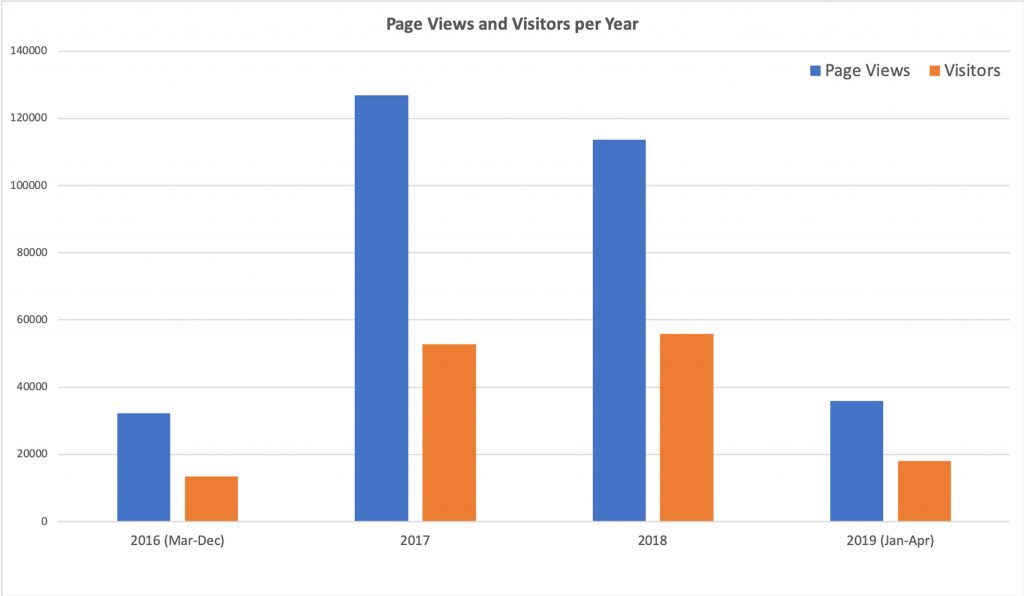About three years ago, in March 2016 we went online with the first version of this weblog. From the beginning of Klaus Schmidt’s research there in the 1990s, public outreach and the communication of research results were important part of the work regarding the site of Göbekli Tepe. With growing media covering, public interest in the archaeology of Göbekli Tepe was increasing as well – including a noticeable rise in pseudoscientific interpretations and conspiracy theories as well. Actual archaeological results seemed to play a less and less visible role in the public narrative of the site and it became clear that an effective communication strategy was needed to address this growing public interest. This was, more or less, the beginning of the ‘Tepe Telegrams’ blog you are now reading.

‘The Tepe Telegrams’, page views and visitors per year (March 2016-April 2019) (Graphic: J. Notroff, DAI)
In the course of the last three years we were able to publish a rather broad collection of articles on this site, some coming from earlier notes and reports, many more from questions and suggestions from you – the readership of this weblog (and we would definitely like to use the chance for saying “Thank you!” for this input). Meanwhile this project-weblog has grown into an encyclopedia of research history and ongoing research regarding the early Neolithic site of Göbekli Tepe – and we are indeed glad about the ongoing interest in our work and research.
Three years of blogging are also a good opportunity to look back – into the content developed, its actual impact on the discussion and the perception of this research. Therefore we went through the research history of the Göbekli Tepe project, the different outreach approaches tested and established over the years, and a lot of statistics. The results of this little analysis has been published in a paper in an open access journal recently and can be found online here:
J. Notroff and O. Dietrich, But what is it good for? – Experiences in Public Outreach of the Göbekli Tepe Project (DAI) [external link], Archäoloigsche Informationen 42 (early view).
“With continuing strong popularity of archaeology in public perception, active science communication is more and more recognized as essential tool to not only inform about current research, but to also counter misinterpretation and misuse of archaeological data. Traditional outreach approaches like museums and popular books or articles have been complemented by new digital tools. In a time, in which facts seem to have become negotiable and ‘alternative facts’ can be proposed, pseudoscientific narratives are playing an increasing role in the public discourse on archaeological research – in particular, due to their accessibility in online media. Confronted with a growing public interest and proportionally increasing pseudoarchaeological narratives, we decided to address both in more open formats of science communication for the Göbekli Tepe Project with the creation of a project weblog whose aim it was to engage communication and provide information where the discussion actually was taking place: Online. This paper provides an insight into experiences and impact of nearly three years of science blogging.”
Recent Comments